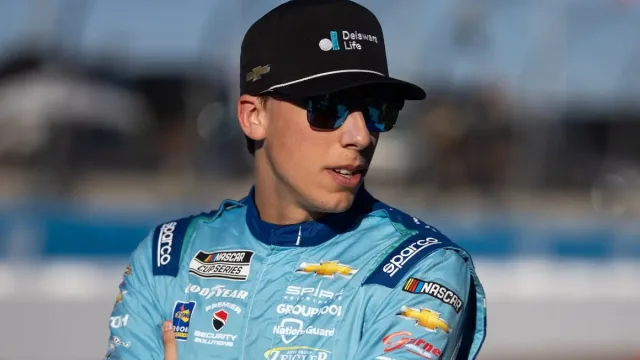Carson Hocevar addresses Next Gen Cup Series criticisms at Kansas, fueling debate over persistent passing issues and calls for genuine fixes within NASCAR’s premier division. As the conversation intensifies among drivers and teams, Hocevar urges a shift toward constructive action rather than ongoing complaints.
Concerns Mount Over Next Gen Car Performance
In recent weeks, drivers from the Xfinity and Truck Series have openly stated that their vehicles offer a more positive racing experience than the current Next Gen Cup Series model. The main frustration centers on the Cup car’s design, which many say limits meaningful passing opportunities and leads to widespread dissatisfaction throughout the field. However, ongoing complaints without direct solutions have stirred questions about the effectiveness of raising these issues.
Carson Hocevar, representing Spire Motorsports, explained his perspective on the controversy during a press interaction at Kansas earlier this month. While acknowledging his own disappointments over the lack of side-by-side racing, Hocevar remains pragmatic about how complaints without actionable solutions do little to improve the sport. He emphasized the importance of focusing energy on finding answers rather than letting frustration take over competition.
We complain, but we only complain to a certain extent because we don’t have a solution. So if you’re really complaining, then if you don’t have a solution, what do you expect to change if you don’t have the solution?
—Carson Hocevar, NASCAR Cup Series Driver
Hocevar leaves the responsibility of identifying fixes with NASCAR’s decision makers, choosing to stay focused on enjoying his time on the track. He pointed out that drivers who consistently run at the front, such as Kyle Larson, might view the situation differently, finding little reason to push for wholesale change while enjoying strong race performances.

Kyle Larson Draws Sharp Contrast With Xfinity Series
Kyle Larson, who has joined select Xfinity Series events this season, has become one of the Cup’s most conspicuous critics when comparing the two racing divisions. His recent win at Texas allowed him to reflect on the contrasting dynamics, revealing a preference for the looser, more manageable Xfinity vehicles that encourage closer, more competitive racing. Larson noted the benefit of tight battles and greater ease maneuvering in traffic—a sentiment echoed by several Cup veterans.
After securing victory in the Andy’s Frozen Custard 300, Larson said,
“You can run much closer to people in Xfinity, which is nice.”
He further explained that managing airflow and running behind cars is noticeably easier in the Xfinity Series, unlike in the Cup Series, where cars feel much less responsive and passing remains a stiff challenge.
“Kind of run in their wake a little bit better, and not be upset. So, the Cup [Series] car is much tougher to get to people and pass them. You can’t really manipulate their car. So, yeah, that makes it fun. When you get to come back to Xfinity and kind of not worry about dirty air quite as much,”
—Kyle Larson, NASCAR Cup Series and Xfinity Series Driver
Efforts Underway and the Road Ahead
Additional drivers, including Denny Hamlin and William Byron, have echoed Larson’s viewpoint, contributing to mounting pressure for NASCAR to address the Next Gen car’s passing limitations swiftly. Behind the scenes, teams and officials continue working towards a car package that will enhance competition and restore excitement for both drivers and fans.
For now, the sport appears locked in a holding pattern as it weighs incremental changes and long-term engineering improvements. With figures like Carson Hocevar and Kyle Larson sparking critical dialogues, the onus is on NASCAR’s leadership to seek effective solutions and restore the thrill of side-by-side racing in the series’ top tier. Until then, drivers, teams, and supporters may have little option but to remain patient and hope that meaningful improvements materialize.
